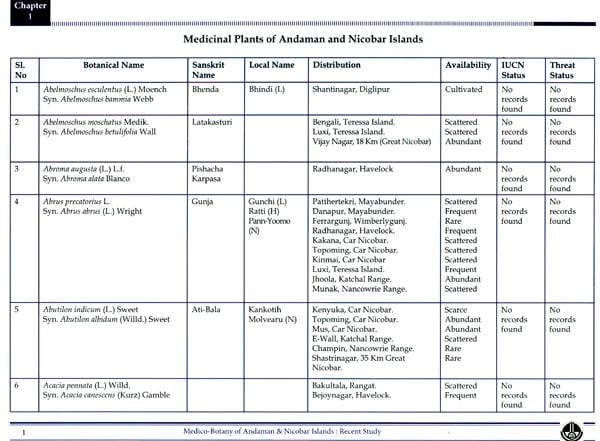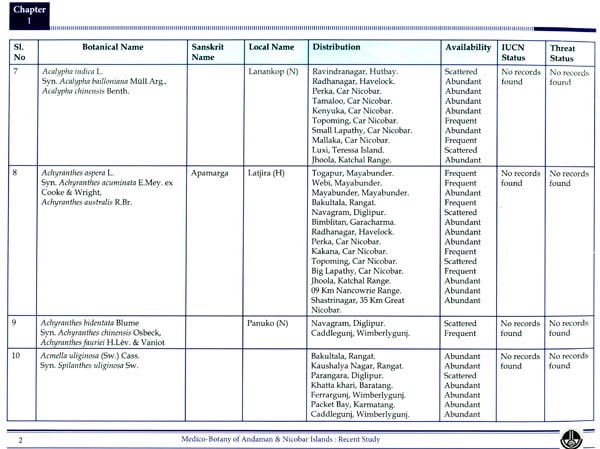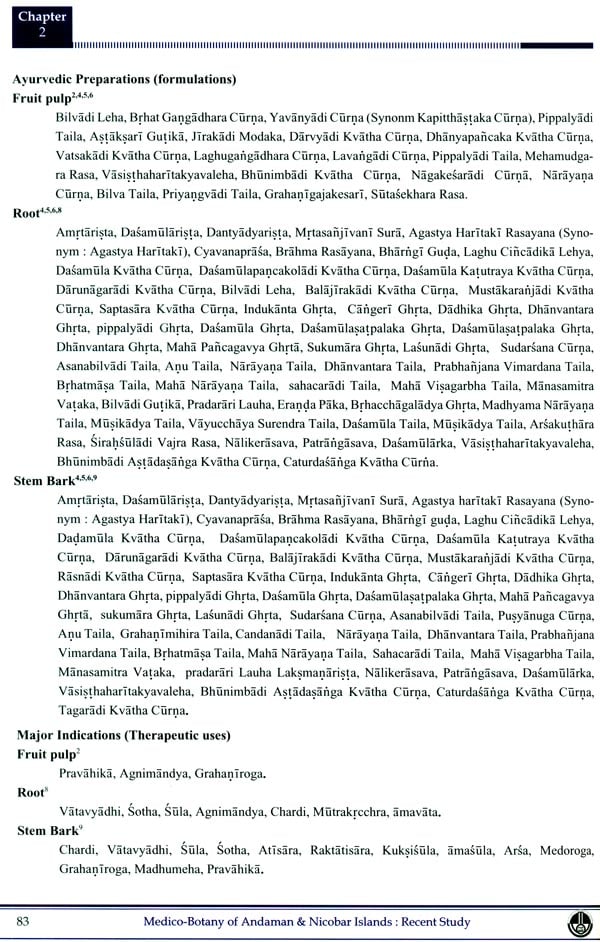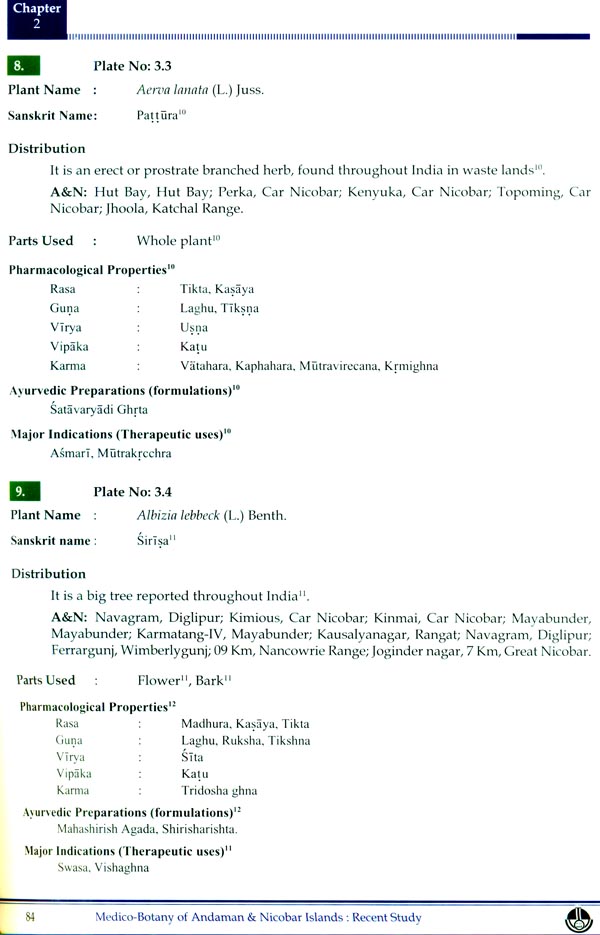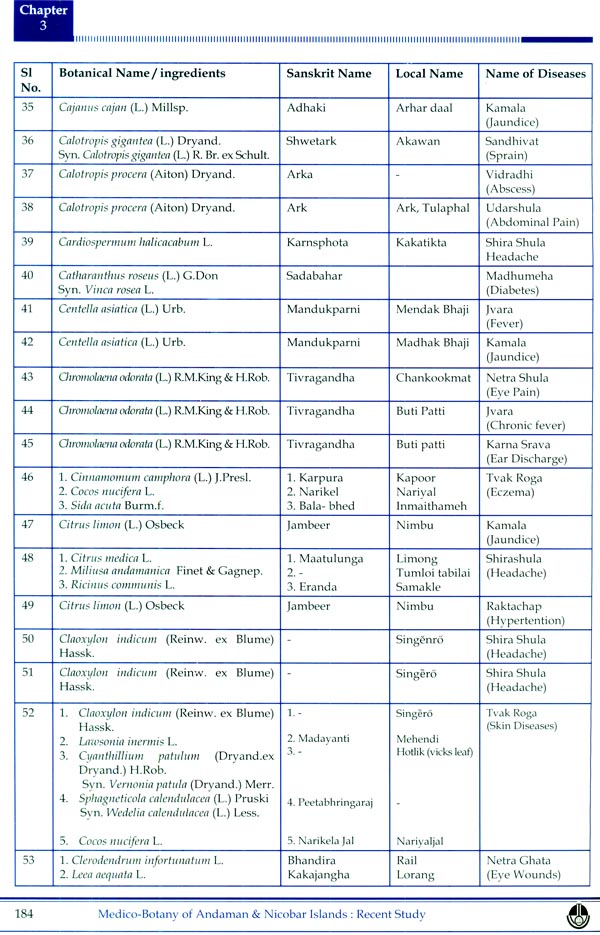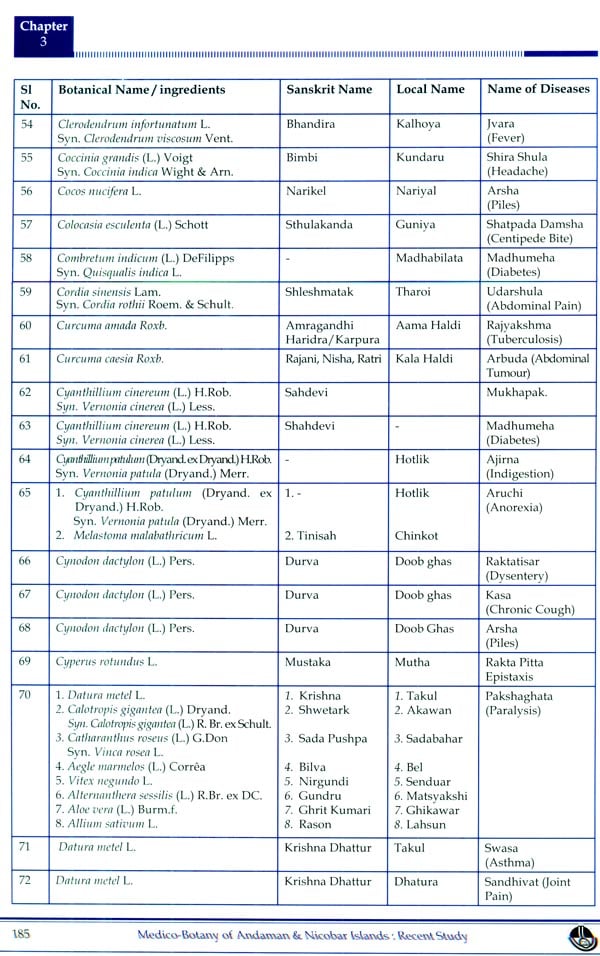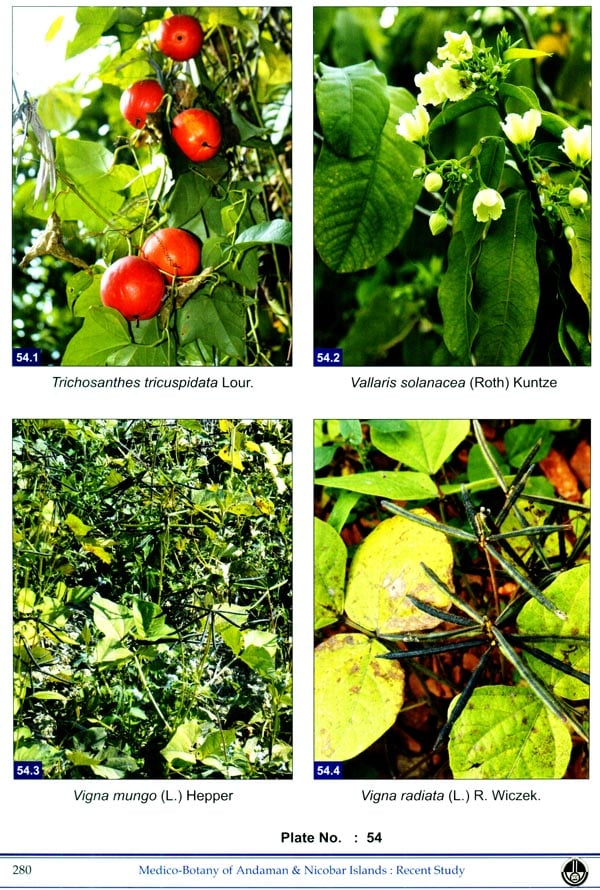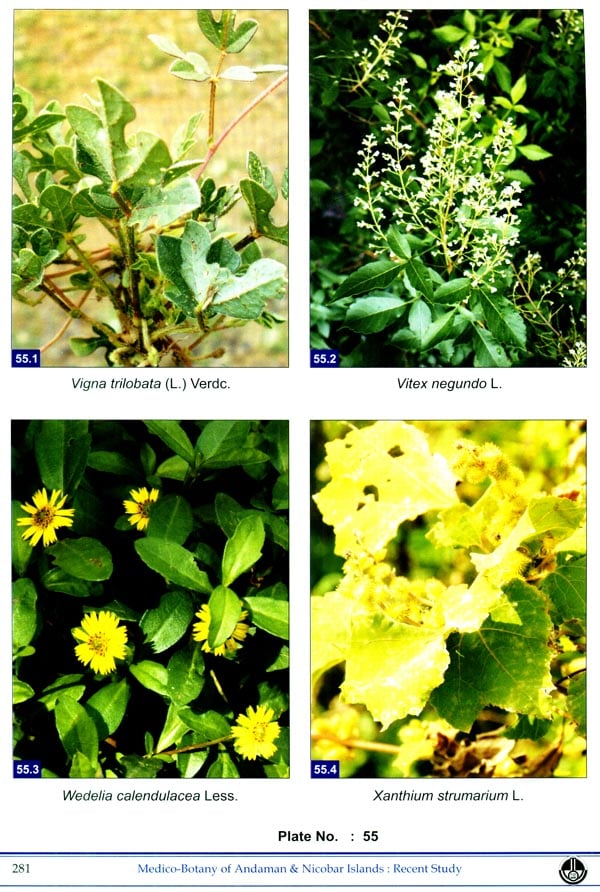
Medico-Botany of Andaman and Nicobar Islands: Recent Study
Book Specification
| Item Code: | NAW935 |
| Author: | Vd. K.S. Dhiman |
| Publisher: | CENTRAL COUNCIL FOR RESEARCH IN AYURVEDIC SCIENCES |
| Language: | English |
| ISBN: | 9789383864225 |
| Pages: | 238 (Throughout Color Illustrations) |
| Cover: | HARDCOVER |
| Other Details | 12.50 X 9.00 inch |
| Weight | 1.54 kg |
Book Description
My deep appreciation to the work carried out by the entire survey team led by Dr. Santosh S Mane posted at Regional Research Center of Ayurveda (RRCA), Port Blair with the help of local BSI officials and Dr. G.V.R. Joseph, A.D. (Botany) who is instrumental in coordinating the entire practical and publication work and lie also shooted majority of the photographs. Dr. B.S. Sharma put his efforts in going through the Ayurvedic portion of the manuscript. I acknowledge Dr. Chinmay Rath, Mrs B. Susmitha, Mr. Ashish Kumar Tripathi, Mr. Abhishek for their support and assistance in compiling the text material of the book and secretarial assistance given by Mr. Md. Haroon Ansari and Ms. Aarti Negi.
My appreciation is due to Dr. Srikanth, Dy. Director General and Dr. M.M. Padhi Ex. Dy. Director General for their unstinting cooperation and encouragement to the team throughout the work.
According to Pandey and Divakar (2008) the indigenous flora of these Islands mainly derived from its having Burmese & Malaysian relatives with similarities those of South East Asia, Srilanka, North East, Western Ghats of South India. Hence the flora of Andaman group of Islands exhibit similarities towards the taxa of South East Asia and main land India. Whereas flora of Nicobar Islands exhibit towards the taxa of Malaysia.
Herbal medicines which formed the basis of health care throughout the world since time immemorial are still widely being used and have considered importance in National and International health sectors especially in Indian systems of medicines. Many herbs are being used directly as therapeutic agents. Besides, there are several medicinal plants which act as starting material for synthesis of drugs or as models for pharmacological active compounds. Due to the above reasons and as explained, Andaman & Nicobar Islands are one of the richest biodiversity hotspot having many medicinal plants. There is a great need to systematically study the medicinal flora of this region.
Andaman & Nicobar Islands are an abode of 6 primitive tribes, Viz., Andaman’s, Jarwas, Onges, Nicobarese, Shompens, and the Sentinels. These tribes and also the other locals largely depend on the plants for the treatment of various ailments. Documenting the folklore used by various medicinal plants from the various tribes is an asset to the Nation for exploring new drugs. With the above issues in mind Regional Research Center of Ayurveda (RRCA), Port lair under Central Council for Research in Ayurvedic Sciences under Ministry of Ayush has taken up a project entitled: "Medico-Botanical survey of Andaman and Nicobar Islands (selected areas)".
CCRAS had its presence in Andaman & Nicobar Islands since 1984. Since then CCRAS has been instrumental in serving the needs of the people of Andaman & Nicobar in the health sector. In 1988 CCRAS has published a book entitled "Observation on Medico-Botany of Andaman & Nicobar Islands", where it has covered 305 medicinal plants of this region along with the folklore uses. After the Tsunami in Dec. 2004 there is a great change in the medicinal flora of Andaman & Nicobar. Out of the 305 plants which were collected during the earlier study only 118 plants the survey team could collect in the present exploration even after extending their surveyed areas.
Present publication encompasses 560 medicinal plants out of which 163 plants are being used in Ayurvedic system of medicine. 204 folk uses were reported for various health ailments like Kamala (Jaundice), Madhumeha (Diabetes), Netradosha (Ophthamolic diseases), Tvak Roga (Skin diseases), Ashmari (Kidney stones), Shweta pradar (Leucorrhoea), E.N.T. diseases, Cuts & wounds (Vrana) etc...
Book's Contents and Sample Pages

